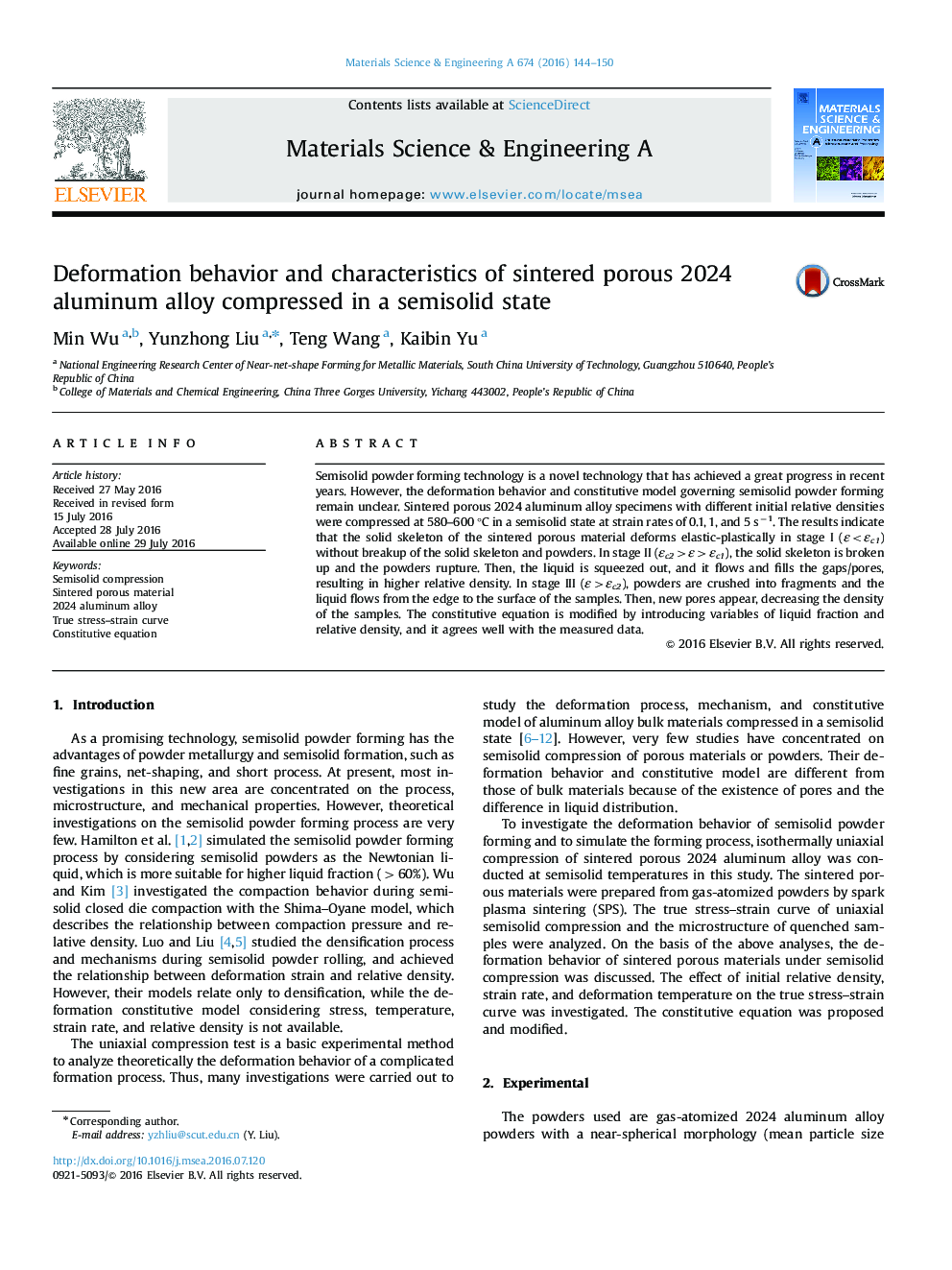| Article ID | Journal | Published Year | Pages | File Type |
|---|---|---|---|---|
| 7974869 | Materials Science and Engineering: A | 2016 | 7 Pages |
Abstract
Semisolid powder forming technology is a novel technology that has achieved a great progress in recent years. However, the deformation behavior and constitutive model governing semisolid powder forming remain unclear. Sintered porous 2024 aluminum alloy specimens with different initial relative densities were compressed at 580-600 °C in a semisolid state at strain rates of 0.1, 1, and 5 sâ1. The results indicate that the solid skeleton of the sintered porous material deforms elastic-plastically in stage I (ε<εc1) without breakup of the solid skeleton and powders. In stage II (εc2>ε>εc1), the solid skeleton is broken up and the powders rupture. Then, the liquid is squeezed out, and it flows and fills the gaps/pores, resulting in higher relative density. In stage III (ε>εc2), powders are crushed into fragments and the liquid flows from the edge to the surface of the samples. Then, new pores appear, decreasing the density of the samples. The constitutive equation is modified by introducing variables of liquid fraction and relative density, and it agrees well with the measured data.
Related Topics
Physical Sciences and Engineering
Materials Science
Materials Science (General)
Authors
Min Wu, Yunzhong Liu, Teng Wang, Kaibin Yu,
